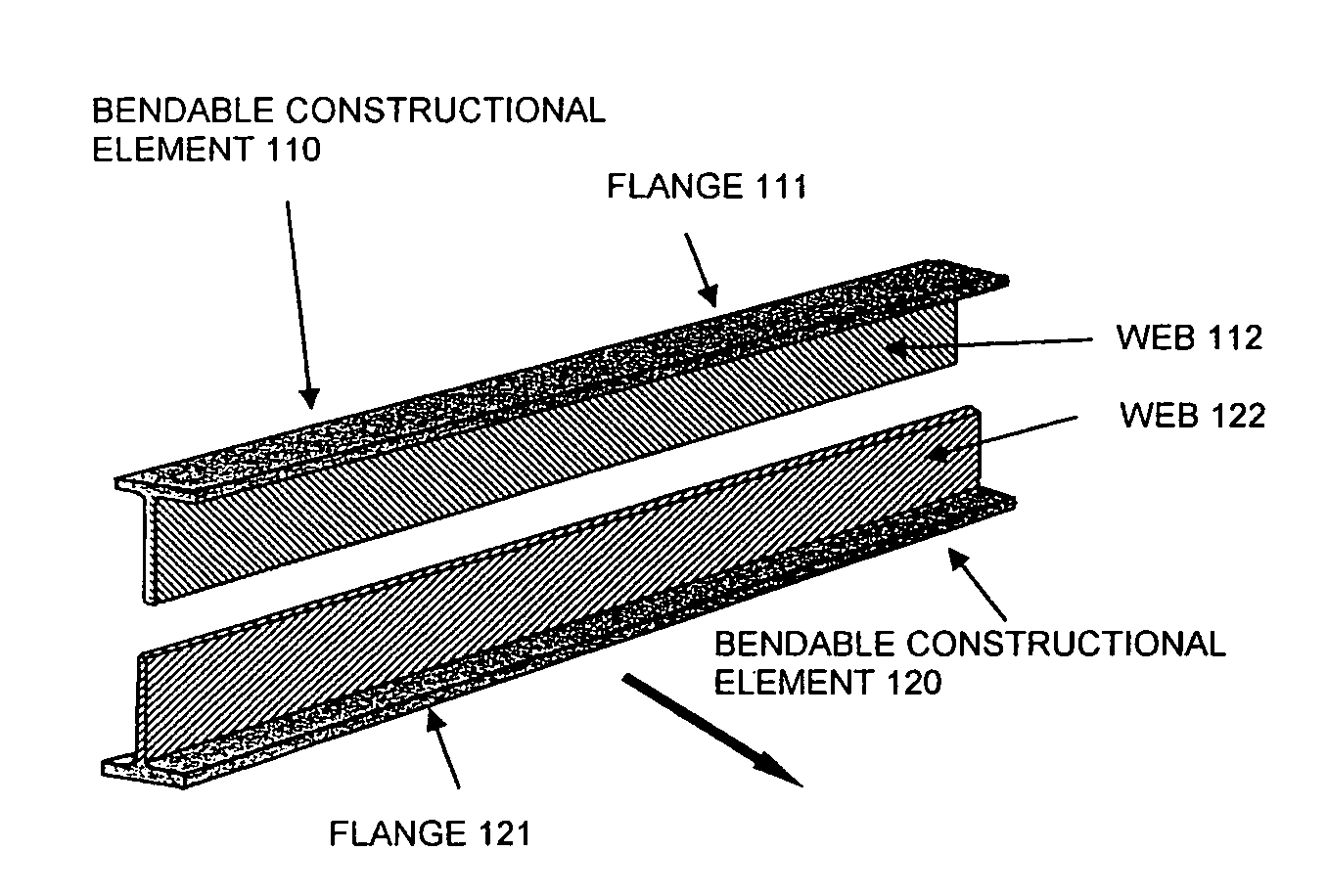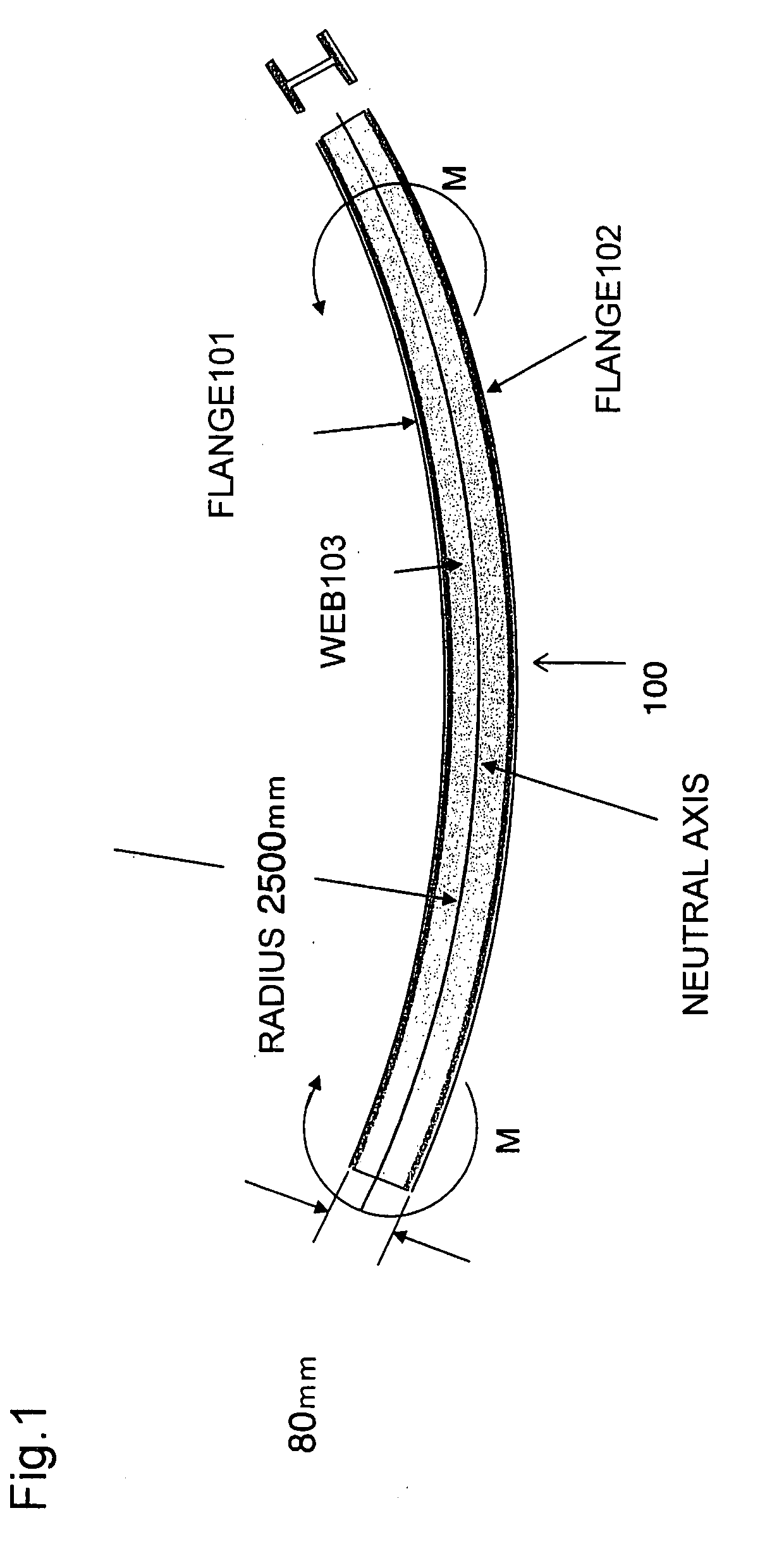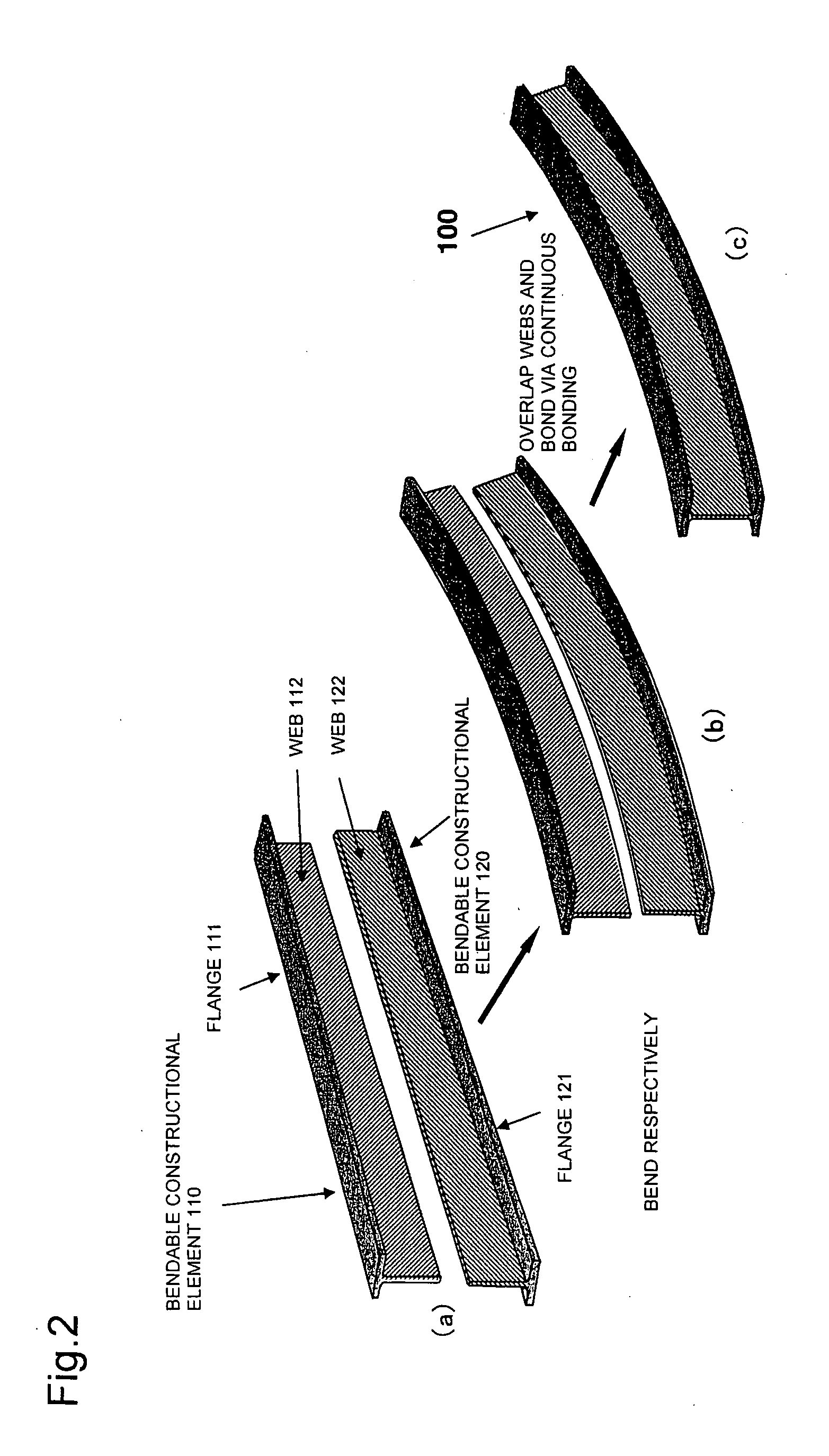Method for continuously forming structural member
a structural member and continuous technology, applied in the direction of girders, efficient propulsion technologies, other domestic articles, etc., can solve the problems of deterioration of flexural rigidity in the low stress area, inferior production efficiency of prior art methods, and high cost, so as to minimize undulation of fibers and high flexural elastic modulus
- Summary
- Abstract
- Description
- Claims
- Application Information
AI Technical Summary
Benefits of technology
Problems solved by technology
Method used
Image
Examples
second embodiment
of the Present Invention
[0142]A second embodiment of the present invention is illustrated in FIG. 7-1, related to a method for manufacturing a curved beam 400 of a carbon fiber composite material curved with a given curvature and having a hat-shaped cross-section (hat section) to be applied for example to a body frame of an aircraft.
[0143]In order to manufacture a constructional element 400 having a hat section, the “basic means K−1” of the present invention is applied to form three constructional members, a channel-shaped constructional element 410 and two constructional elements 420 and 430 having an angled cross-section, and then the “basic means K−2” is applied to perform adhesive bonding.
[0144]Each of the constructional elements 410, 420 and 430 are manufactured via an ADP method, which is formed in a long and bent state, and prepared to be bonded.
[0145]When a bending moment is applied to a beam member 400 having a hat section, sides 401, 404 and 405 constituting the flange of ...
fourth embodiment
of the Present Invention
[0177]The fourth embodiment of the present invention describes a method for manufacturing a stringer of a rear fuselage of an aircraft.
[0178]As shown in FIG. 13, a fuselage stringer 700 of an aircraft functions to receive load of tensile / compressive force (especially compressive force) that the outer panel of the body receives, so that force is transferred from a flange 701 to a web 702. Therefore, the flange 701 of the stringer 700 must endure shear force, while the web 702 must endure tensile / compressive force.
[0179]Since the rear fuselage of an aircraft is narrowed toward the tail, the stringers supporting the outer panel of the body are formed as structural members with curvature, and the curvatures of each member differ according to the mounting position of the members.
[0180]In the prior art, the metallic rear fuselage stringer is formed by manufacturing a straight stringer and providing via secondary plastic deformation process the required curvatures c...
PUM
| Property | Measurement | Unit |
|---|---|---|
| temperature | aaaaa | aaaaa |
| temperature | aaaaa | aaaaa |
| temperature | aaaaa | aaaaa |
Abstract
Description
Claims
Application Information
 Login to View More
Login to View More - R&D
- Intellectual Property
- Life Sciences
- Materials
- Tech Scout
- Unparalleled Data Quality
- Higher Quality Content
- 60% Fewer Hallucinations
Browse by: Latest US Patents, China's latest patents, Technical Efficacy Thesaurus, Application Domain, Technology Topic, Popular Technical Reports.
© 2025 PatSnap. All rights reserved.Legal|Privacy policy|Modern Slavery Act Transparency Statement|Sitemap|About US| Contact US: help@patsnap.com



